Satish T. S. Bukkapatnam
Process signature-driven high spatio-temporal resolution alignment of multimodal data
Mar 13, 2024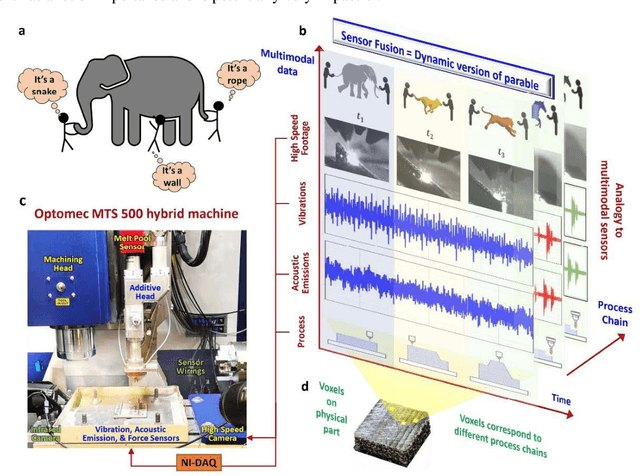
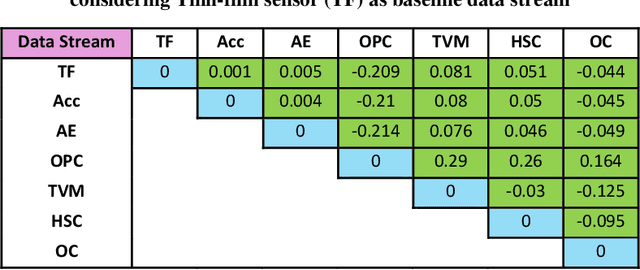
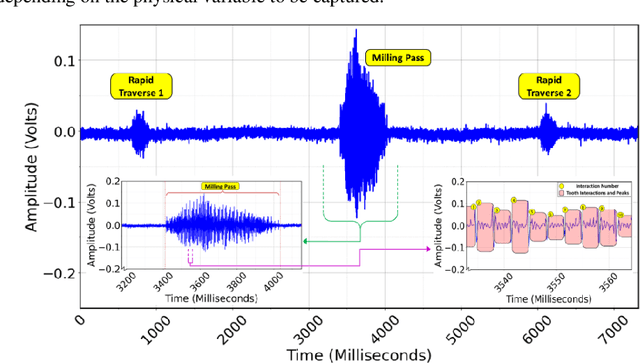
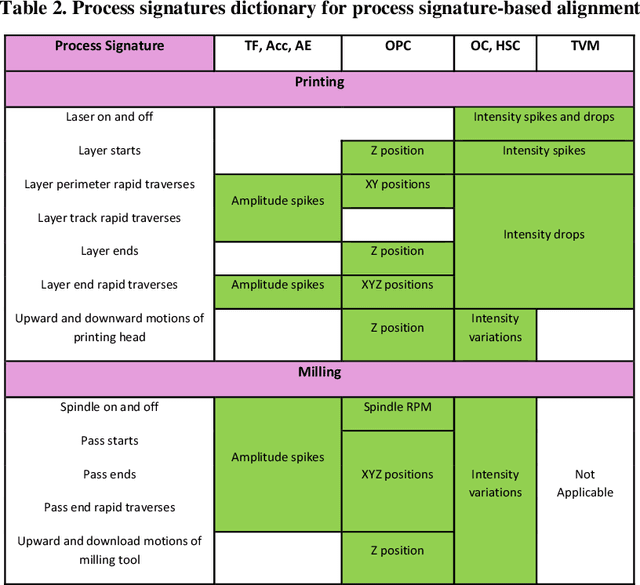
Abstract:We present HiRA-Pro, a novel procedure to align, at high spatio-temporal resolutions, multimodal signals from real-world processes and systems that exhibit diverse transient, nonlinear stochastic dynamics, such as manufacturing machines. It is based on discerning and synchronizing the process signatures of salient kinematic and dynamic events in these disparate signals. HiRA-Pro addresses the challenge of aligning data with sub-millisecond phenomena, where traditional timestamp, external trigger, or clock-based alignment methods fall short. The effectiveness of HiRA-Pro is demonstrated in a smart manufacturing context, where it aligns data from 13+ channels acquired during 3D-printing and milling operations on an Optomec-LENS MTS 500 hybrid machine. The aligned data is then voxelized to generate 0.25 second aligned data chunks that correspond to physical voxels on the produced part. The superiority of HiRA-Pro is further showcased through case studies in additive manufacturing, demonstrating improved machine learning-based predictive performance due to precise multimodal data alignment. Specifically, testing classification accuracies improved by almost 35% with the application of HiRA-Pro, even with limited data, allowing for precise localization of artifacts. The paper also provides a comprehensive discussion on the proposed method, its applications, and comparative qualitative analysis with a few other alignment methods. HiRA-Pro achieves temporal-spatial resolutions of 10-1000 us and 100 um in order to generate datasets that register with physical voxels on the 3D-printed and milled part. These resolutions are at least an order of magnitude finer than the existing alignment methods that employ individual timestamps, statistical correlations, or common clocks, which achieve precision of hundreds of milliseconds.
Learning graph-Fourier spectra of textured surface images for defect localization
Dec 02, 2023



Abstract:In the realm of industrial manufacturing, product inspection remains a significant bottleneck, with only a small fraction of manufactured items undergoing inspection for surface defects. Advances in imaging systems and AI can allow automated full inspection of manufactured surfaces. However, even the most contemporary imaging and machine learning methods perform poorly for detecting defects in images with highly textured backgrounds, that stem from diverse manufacturing processes. This paper introduces an approach based on graph Fourier analysis to automatically identify defective images, as well as crucial graph Fourier coefficients that inform the defects in images amidst highly textured backgrounds. The approach capitalizes on the ability of graph representations to capture the complex dynamics inherent in high-dimensional data, preserving crucial locality properties in a lower dimensional space. A convolutional neural network model (1D-CNN) was trained with the coefficients of the graph Fourier transform of the images as the input to identify, with classification accuracy of 99.4%, if the image contains a defect. An explainable AI method using SHAP (SHapley Additive exPlanations) was used to further analyze the trained 1D-CNN model to discern important spectral coefficients for each image. This approach sheds light on the crucial contribution of low-frequency graph eigen waveforms to precisely localize surface defects in images, thereby advancing the realization of zero-defect manufacturing.
Simultaneous 12-Lead Electrocardiogram Synthesis using a Single-Lead ECG Signal: Application to Handheld ECG Devices
Nov 20, 2018
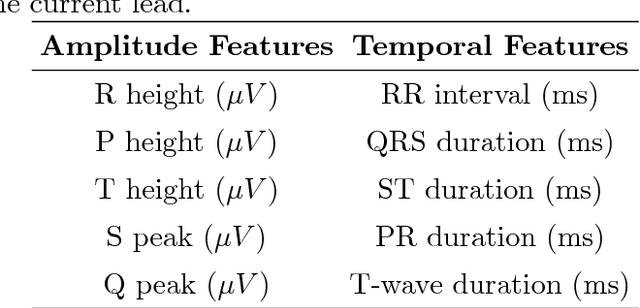


Abstract:Recent introduction of wearable single-lead ECG devices of diverse configurations has caught the intrigue of the medical community. While these devices provide a highly affordable support tool for the caregivers for continuous monitoring and to detect acute conditions, such as arrhythmia, their utility for cardiac diagnostics remains limited. This is because clinical diagnosis of many cardiac pathologies is rooted in gleaning patterns from synchronous 12-lead ECG. If synchronous 12-lead signals of clinical quality can be synthesized from these single-lead devices, it can transform cardiac care by substantially reducing the costs and enhancing access to cardiac diagnostics. However, prior attempts to synthesize synchronous 12-lead ECG have not been successful. Vectorcardiography (VCG) analysis suggests that cardiac axis synthesized from earlier attempts deviates significantly from that estimated from 12-lead and/or Frank lead measurements. This work is perhaps the first successful attempt to synthesize clinically equivalent synchronous 12-lead ECG from single-lead ECG. Our method employs a random forest machine learning model that uses a subject's historical 12-lead recordings to estimate the morphology including the actual timing of various ECG events (relative to the measured single-lead ECG) for all 11 missing leads of the subject. Our method was validated on two benchmark datasets as well as paper ECG and AliveCor-Kardia data obtained from the Heart, Artery, and Vein Center of Fresno, California. Results suggest that this approach can synthesize synchronous ECG with accuracies (R2) exceeding 90%. Accurate synthesis of 12-lead ECG from a single-lead device can ultimately enable its wider application and improved point-of-care (POC) diagnostics.
Balanced Random Survival Forests for Extremely Unbalanced, Right Censored Data
Apr 12, 2018



Abstract:Accuracies of survival models for life expectancy prediction as well as critical-care applications are significantly compromised due to the sparsity of samples and extreme imbalance between the survival (usually, the majority) and mortality class sizes. While a recent random survival forest (RSF) model overcomes the limitations of the proportional hazard assumption, an imbalance in the data results in an underestimation (overestimation) of the hazard of the mortality (survival) classes. A balanced random survival forests (BRSF) model, based on training the RSF model with data generated from a synthetic minority sampling scheme is presented to address this gap. Theoretical results on the effect of balancing on prediction accuracies in BRSF are reported. Benchmarking studies were conducted using five datasets with different levels of class imbalance from public repositories and an imbalanced dataset of 267 acute cardiac patients, collected at the Heart, Artery, and Vein Center of Fresno, CA. Investigations suggest that BRSF provides an improved discriminatory strength between the survival and the mortality classes. It outperformed both optimized Cox (without and with balancing) and RSF with an average reduction of 55\% in the prediction error over the next best alternative.
 Add to Chrome
Add to Chrome Add to Firefox
Add to Firefox Add to Edge
Add to Edge